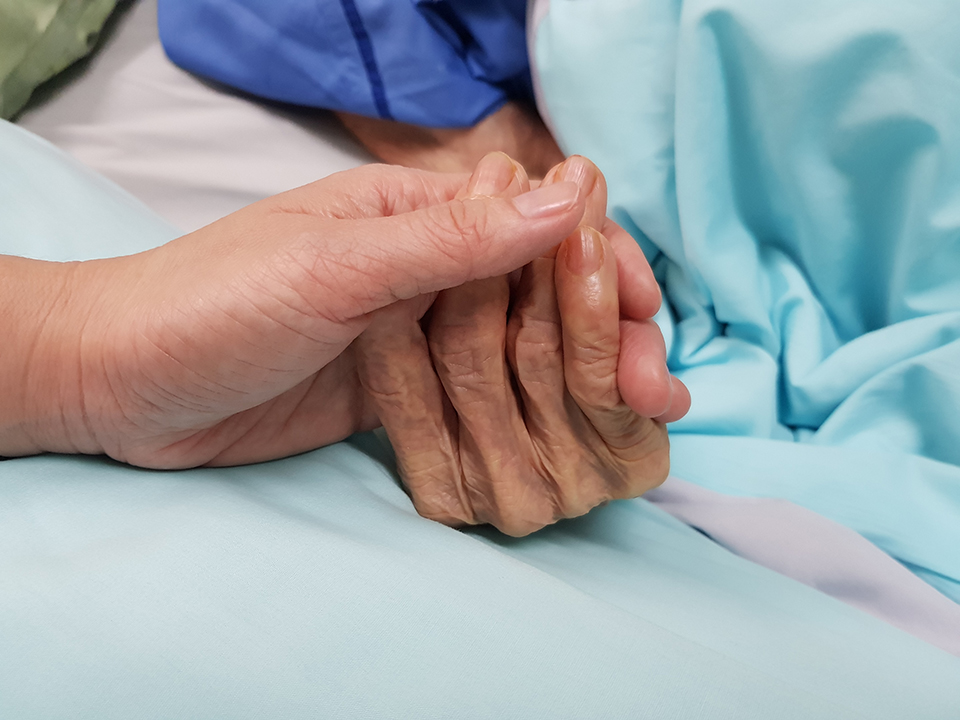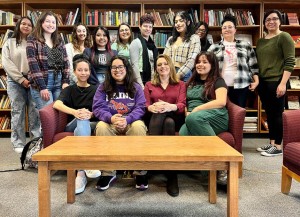CSUN Prof Studying End-of-Life Care in LA’s Underserved Communities

CSUN religious studies professor Claire White has assembled a team of students to to study these disparities in end-of-life care for underserved populations in Los Angeles. Photo credit, sittithat tangwitthayaphum, iStock
Deciding where a family member should go and the type of care they should receive towards the end of their life involves a myriad of often heart-wrenching decisions that can have lasting emotional impact long after the person has died.
California State University, Northridge religious studies professor Claire White said this is particularly true for people from underserved populations or who are highly religious. These individuals, she said, are less likely to seek hospice care — which focuses primarily on individual comfort and making a dying person’s remaining time as meaningful as possible.
“People from underserved populations and highly religious individuals are more likely to die in an intensive care unit (ICU) when they have a terminal illness like cancer than their counterparts in better served communities or than those who are less religious,” said White, who teaches in CSUN’s College of Humanities. “The reason that this is a problem is that when people die in ICU care, they typically have higher levels of physical pain and psychological distress. We also know that family members suffer poorer adjustment following the loss of a loved one than when a terminally ill loved one dies in hospice care”.
“The question is why?” White said. “Why are underserved populations and highly religious individuals more likely to die in ICU care than hospice care? And why do their family members suffer worse adjustment after the loss of their loved one?”

Members of the CSUN team doing research on end-of-life care in Los Angeles. From left to right, starting in the back:Kayleen Vargas, Kaytlin Preciado, Serena Nuber, Josie Lopez, Diana Lozano-Santana, Katrina Hill, Brenda Medina, Loreal Wimberly, Angelica Macklin, Letty Rodriguez, Marylin Orantes, Sharon Sanchez, religious studies professor Claire White and Danielle Morales. Photo by James Lunsford.
To answer those questions, White has assembled a team of 24 graduate and undergraduate students from a variety of disciplines at CSUN to study these disparities in end-of-life care for underserved populations in Los Angeles. The researchers are investigating how key psycho-social factors, including religious and spiritual beliefs, impact medical-decision making by family members of terminally ill patients. Among those decisions are whether the dying family member should receive hospital or hospice care and whether care should be curative interventions or palliative focused.
This month, the student researchers are reaching out to family members across Los Angeles to ask them about what factored into their decisions about end-of-life care for their loved ones.
“Most of the research that currently exists focuses on end-of-life care for the dying individuals,” White said. “I am really focused on the people who are left behind and how they cope following the death of a loved one.
“We’re conducting semi-structured interviews with family members who have lost a loved one due to terminal illness in the past 12 months in Los Angeles,” White said. “The study is really locally focused, and it’s locally focused because we need to be contextually sensitive—the problems we have Los Angeles may not necessarily be the problems that other parts of the United States are facing, or even, other parts of the world.”
White said some of questions use standardized measures of grief and coping, but others are open-ended, such as “What (if any) role did spirituality/religion play for you in deciding the type of care your family member should receive?” The students will also ask questions about what influenced end-of-life care decisions, including questions about practical considerations such as finances, trust in medical professionals, religious/spiritual beliefs, and values related to death and dying.
To prepare for the interviews, the student researchers received two days of intensive training from a licensed clinical social worker and will take part in bi-weekly support meetings.
While White does not know what the study will find, she believes that it may dispel assumptions about ethnic groups and their religious beliefs.
“The existing literature has made assumptions that lump diverse groups together,” she said. “I think there are going to be differences in the factors that influence different kinds of groups, among those is cultural values.”
Hospice workers and grief counselors have told White about the important role cultural values play in end-of-life decisions.
“And that’s what we are focusing on in this research,” she said.
White is curious to see how cultural values intersect with socio-economic status.
“I have heard stories from Latino family members who felt that not putting their loved one into hospice care was giving up hope for the family unit,” she said. “I have also heard from a low-income African American family member that her father provided the only source of income. In that case, he refused to go into hospice care because it would mean a loss of his valued role as the breadwinner of his family.”
“The socio-economic barriers may intersect in interesting ways with cultural values,” she continued. “And that’s something I think that we’re really missing. Some existing research assumes that the reason that underserved groups and highly religious individuals go to ICU care is because they want aggressive interventions; and the reason they want aggressive interventions is because there’s hope for a miracle. I think that’s an overly simplistic way of reasoning about groups that are not white, upper- or middle-income class, which is the population most of the other research has looked at. These are the assumptions we’re trying to test and challenge.”
To learn more about the end-of-life care study, visit www.griefstudy.com.

 experience
experience